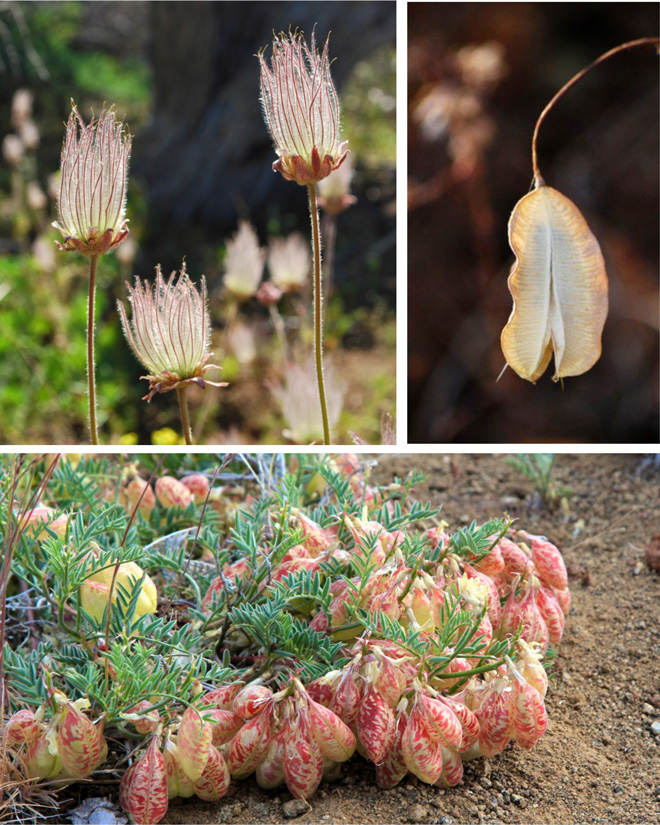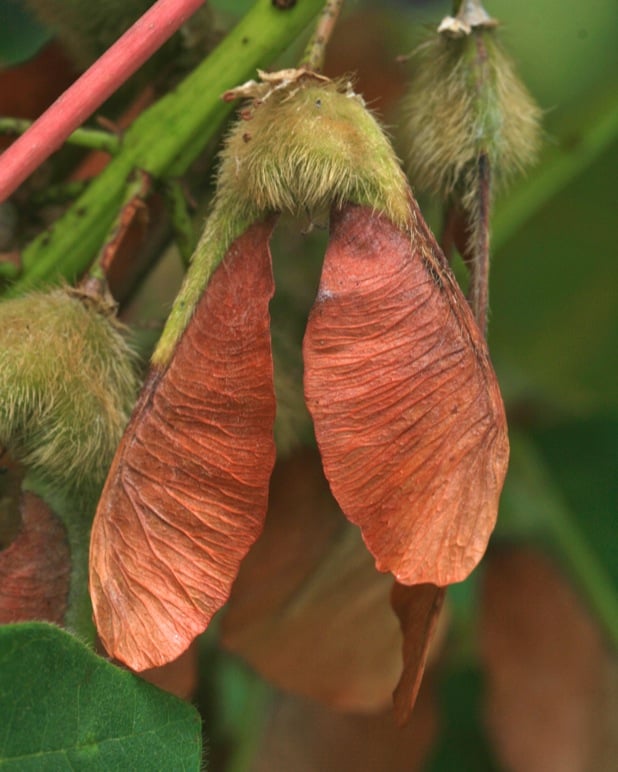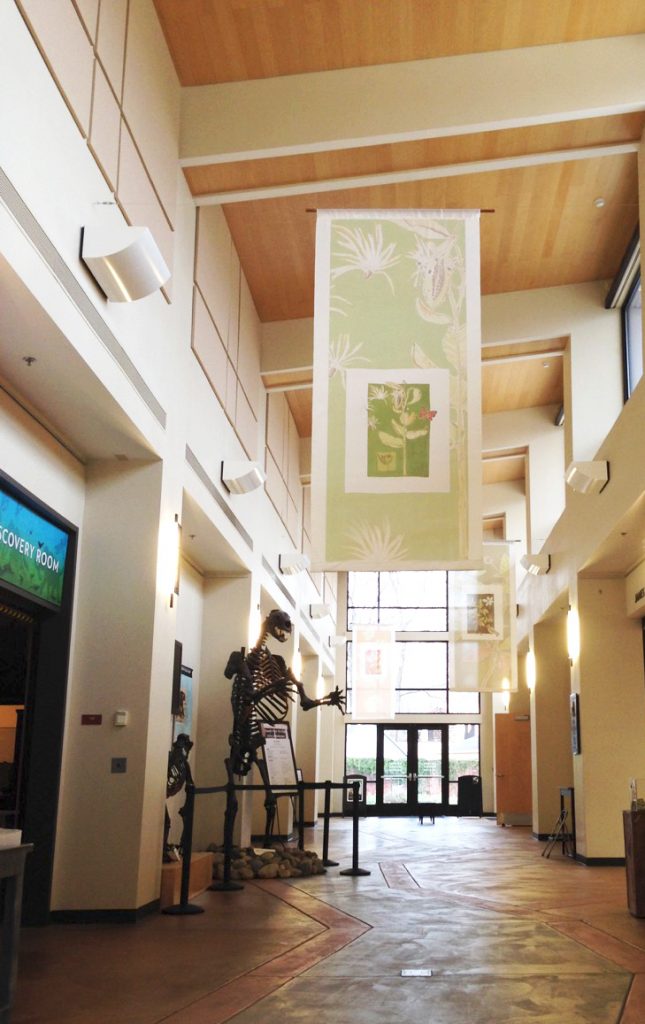
Seeds

Contributor

Seeds: Nature’s Artful Engineering is a traveling exhibit of photographs, interpretive information, and hands-on activities. The exhibit is the third in a series of natural history exhibits conceived and created by John Whittlesey and me.
John Whittlesey is owner of Canyon Creek Nursery & Design in interior Northern California and a garden designer, plantsman, landscape contractor, and avid photographer. He is author of The Plant Lover’s Guide to Salvias published by Timber Press in 2014.
I am the native plant curator at Gateway Science Museum in Chico, California, and the creator and host of Cultivating Place: conversations on natural history and the human impulse to garden, a weekly public radio gardening podcast from North State Public Radio.
Enjoyment of and appreciation for the amazing diversity and beauty of the natural world, in the wild and in the garden, directly inspires our work. This exhibit is designed as a vehicle for us to share our excitement about the incredible diversity of seed forms, evolutionary adaptations, and dispersal techniques with others.

Artful engineering
The science of seeds and seed dispersal is a vast field of botanical study known as seed ecology, or carpology. The exhibit, which introduces visitors to basic seed ecology and a range of amazing seed structures and dispersal mechanisms, is organized by the primary way a seed is dispersed: by gravity (weight), by wind, by wildlife, by water, or by mechanical projection.

Photo: John Whittlesey
Seed structures and their many ingenious dispersal strategies are elegant in their simplicity or their intricacy. They can be beautiful to behold in the way they catch the light, the wind, the water, and the attention of passers-by. Consider the magic of blowing on a ripe dandelion seed head, or pausing to pick up a perfect acorn and putting it into your pocket.
Evidence of seed-bearing plants—spermatophytes—first appeared more than 300 million years ago. Since the earliest seeds, plants have evolved to include seed ferns, conifers (gymnosperms), and flowering plants (angiosperms). Seeds and their associated dispersal structures (together known as diaspores), as well as their dispersal modes, have diversified into the remarkable feats of natural engineering we have today—ensuring the continued success of the plant kingdom.

Seed stories
Seed transport—how seeds disperse—is just one part of the story of flowering plants. Seeds result from successful pollination in flowering plants, or angiosperms, which have evolved closely with their pollinating insects. Flowers, offering up nectar, attract pollinators that carry pollen between like species of plants. This method of pollination allows for genetic diversity, which in turn helps plants continually adapt to changing climates and habitats.
The seed stage of a plant’s life is the only time it is both dormant and mobile. Through evolution, seeds have given the plant kingdom the ability to diversify and expand to almost every corner of the globe.
Once mature, seeds drop and roll, are flung, they fly, hitchhike on animals, are transported by birds and bears, carried and buried by ants and beetles, and moved from one place to another by water. Seed dispersal is an evolutionary adaptation that helps continuity of the species and is fundamental for population persistence.

Seeing seeds
The Seeds exhibit is designed to encourage others to notice interesting seeds. We wanted to provide viewers the chance to learn more about common native plants—seeds that anyone might see in the natural areas around them. We also included images of some of the more marvelous seed forms to pique visitor interest. During the research and development phase, John and I took fabulous field trips to photograph and collect specimens and to research seed ecology literature.
As in our previous exhibits on pollinators and mushrooms, we wanted to incorporate human artistry in some way by having a painter or an illustrator create and contribute their work to the exhibit. Ultimately, we commissioned Northern California watercolor artist Candy Matthews to create three paintings, each depicting an iconic seed type and its faunal relationship. The three paintings depict a milkweed flower to seed cycle with a monarch butterfly; a valley oak and acorn seed cycle with an acorn woodpecker; and a native California dogwood flower to fruit cycle with a migrating cedar waxwing.

Local graphic and fine artist Elizabeth Kuiper, of Pixel Perfect Studio in Chico, California, then transformed Matthews’ paintings into three grand scale (two-and-a-half-feet wide by eight-feet-tall) silk banners, which hang throughout the exhibit. The finished banners contribute a dramatic and dynamic human and artistic element to the exhibition.

Seeds are critically important to all of life—for the future health and diversity of the world’s plants, and as an important food source for wildlife and humans. In developing this exhibit, it’s our hope that Seeds: Nature’s Artful Engineering will light up curiosity and imagination and prompt viewer’s engagement and observation.

Further Resources
The “Seeds: Nature’s Artful Engineering” exhibit will be at the Hi Desert Museum in Yucca Valley from January through March of 2017. Visit the Exhibit Envoy website to learn about future venues hosting the exhibit.
Exhibit Envoy’s mission is to build new perspectives among Californians, create innovative exhibitions and solutions, and advance institutions in service to their communities. www.exhibitenvoy.org.
Share:
Social Media
Garden Futurist Podcast
Most Popular
Videos
Topics
Related Posts

Low Maintenance Gardens – Better for Pollinators and People
Autumn 2022 “I come out every day. It’s therapy, my meditation.” Janet’s young garden transformed from overgrown, invasive plants to mostly natives. The dailiness of

Calochortophilia: A Californian’s Love Affair with a Genus
Summer 2022 I can chart the progression of my life by Calochortus. For the last two decades, at least. As a teenage girl growing up

Pacific Plant People: Carol Bornstein
Spring 2022 Public gardens play a key role in demonstrating naturalistic planting design, selecting native and adapted plants for habitat, and testing techniques for reducing

Add Year-Round Interest and Winter Blooms for Pollinators
Spring 2022 This article was created from an Interview by Merrill Jensen with Neil Bell in the Summer of 2021 for our Pacific Plant People











Responses